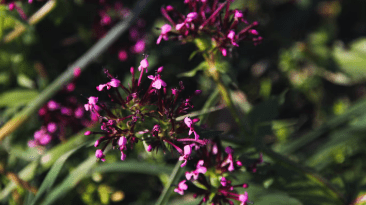
Valeriana officinalis
Latin name: Valeriana officinalis
Short name: Valer
Common name: Valerian | Garden Heliotrope | All-Heal | Setwall | Phu Root
Primary miasm: Psoric
Kingdom: Plants
Family: Caprifoliaceae
- Symptomatology
- Remedy Information
- Differentiation & Application
Valeriana officinalis is a perennial flowering plant native to Europe and Asia. Its dried roots, known for their strong, musky odour, have been used for centuries as a sedative and anxiolytic. In homeopathy, the tincture is prepared from the dried root and is chiefly employed for nervous affections, hysteria, sensory disturbances, and nerve pains with paradoxical symptoms.
Widely used in herbal medicine for anxiety, insomnia, restlessness, and muscle cramps. Valerian root is a common ingredient in over-the-counter sleep aids and calming herbal blends.
Proved by Hahnemann and expanded in Allen’s Encyclopedia. Known for its peculiar symptoms in hysteria and nervous excitement.
- Nervous system – especially functional disturbances and hysterical states
- Sensory system – sensations of floating, lightness, inversion
- Spine and extremities – neuralgias, twitching, cramps
- Gastrointestinal tract – nausea, bloating, cramping from nervous origin
- Women’s reproductive system – hysteria, emotional instability during menses
- Muscles and joints – shifting pains, neuralgic and rheumatic
- Open air
- After eating
- Lying on abdomen
- Gentle motion
- Pressure on affected part
- Rest and immobility
- Emotional excitement or mental exertion
- Cold air or draughts
- Evening and night
- Thinking about symptoms
- Suppressed discharges
- Ignatia amara – Similar emotional instability, but Ignatia has more grief and contradiction of symptoms
- Crocus sativus – Hysteria with alternation between mirth and sadness, but more haemorrhagic tendencies
- Zincum metallicum – Restlessness and twitching, but more focused on reflexes and spinal debility
- Moschus – Hysteria with fainting and great air hunger, but more dramatics and offensive discharges
- Cimicifuga – Hysterical states with rheumatic and uterine symptoms, but more mental gloom
- Asafoetida – Hysteria and globus with flatulence and contradiction of symptoms
- Complementary: Ignatia, Moschus, Zincum
- Antidotes: Camphora, Nux vomica
- Follows well: Belladonna, Pulsatilla
- Inimical: Strong mental suppressors or sedatives
Valeriana officinalis embodies nervous overactivity, hysteria, and sensitive response to emotional triggers. It suits individuals who are full of strange sensations—floating, flying, reversed gravity, or disconnection from reality. The remedy is apt for hysterical women, nervous children, and those whose minds and bodies respond in unpredictable, excessive ways. At its core, it reflects functional disorder without pathology, where sensation overpowers structure.
- Indicated in functional nervous complaints with no pathology
- Valuable in hysteria, irritable bowel, spinal neuralgia, and cramps
- Helps children with twitching, hypersensitivity, or erratic behaviour
- Useful in post-menopausal hot flushes with nervousness
- Best suited to low to moderate potencies (6C to 200C), depending on acuteness
Mind
- Hysteria
- Oversensitive to pain
- Delusions of floating
- Anxiety, nervous
Extremities
- Twitching, jerking
- Cramping, calves
- Restlessness at night
Sleep
- Insomnia, from excitement
- Dreams, anxious
- Starts from sleep
Spine
- Pain, sensitive to touch
- Crawling sensation
- Pain worse emotional excitement
Generalities
- Better open air
- Worse mental exertion
- Worse emotions
- Samuel Hahnemann – Materia Medica Pura: Original proving notes and early hysterical symptoms
- T.F. Allen – Encyclopedia of Pure Materia Medica: Comprehensive proving, especially sensory and spinal symptoms
- John Henry Clarke – Dictionary of Practical Materia Medica: Nervous system detail, mental symptoms
- William Boericke – Pocket Manual of Homoeopathic Materia Medica: Clinical indications and modalities
- C. Hering – Guiding Symptoms: Focused on neuralgia, floating sensations, and emotional states
